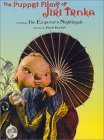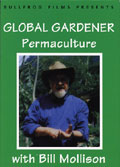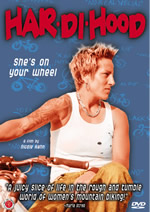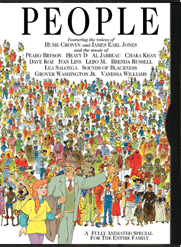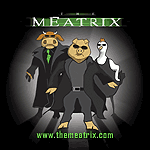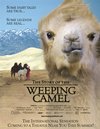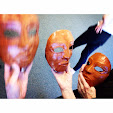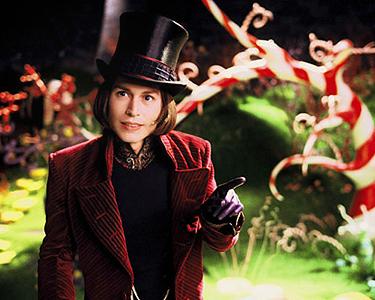
Tim Burton doesn’t need me to send people to the box office, but I’ve loved his recent work too much not to have a say about his latest alter-ego, and there’s no reason to leave things to film critics who work way too hard to be hip, ironic and smart all at once, like
Anthony Lane ironizing in The New Yorker:
“The new Tim Burton movie stars Johnny Depp as an ageless weirdo, whose magical skills are matched only by his hangups about where he came from and how he is supposed to make friends with regular people. The film is called ‘Edward Scissorhands.’”
Sorry to pick on Anthony Lane but it’s too late to be reviewing
CCF; maybe not too late to review a review of it.
Lane is right in seeing shades of Scissorhands in Willy Wonka, the latest of Tim Burton’s creative-genius-cum-social-misfit characters. Jack Skellington, Ed Wood, Batman and Beetlejuice are all here, but most of all Edward Scissorhands, who is referenced in everything from the production design of Charlie’s house, with its caving-in roof, to the grid-like orderliness of the town, to the scissors in Wonka’s hand when he cuts the ribbon to his factory, to the association of snow with love and creativity, to the tinkling incidental stylings of Danny Elfman.
With his continuing stories of outsider-artists, Burton has created something contradictory and, to use one of Wonka’s favorite words, “weird”—a series of personal blockbuster films.
CCF, which is as surely about cinema as it is about candy, wrestles with this contradiction on the thematic level: how can someone so far-out be such a screaming financial success? Wonka, like Burton, is a wild, sometimes brooding talent making it in a bottom-line world, and while it isn’t cool anymore to talk about capitalism, it’s hard to keep from mentioning
CCF’s many inconsistent messages about assembly-line production, wage slavery and machines/squirrels/Oompa Loompas vs. people. Burton and screenwriter John August are content at film’s end to leave most of Charlie’s town unemployed, supplanted by automation and “imported” workers from an undeveloped country willing to work for chocolate. (A chocolate Walmart Empire? Yes, you should be disturbed!)
But
CCF is mostly about Wonka’s relationship to Burton’s other misfits and to Burton himself. Here, Edward Scissorhands has found success and fame, but something is still missing, that little thing called love, and whether, and how, it can co-exist with artistic flow. Finally, Edward has found his way out of isolation, if not out of his castle.
When Charlie leaves his crooked house and his endearing family (an only child with—count them!—
six supportive parents to Wonka’s bitter single father) and enters the factory with his ticket-holding peers, the movie faithfully follows the book’s trail of cautionary disappearances, one misbehaving child after the next. The other kids are archetypal variations, children gone bad at the hands of distant parents. They all have some kind of exaggerated attachment disorder, and it will be up to Charlie and Grandpa Joe to show the worst case, Willie Wonka himself, out of his suffering. As in the book, children will be sucked into tubes, turned into blueberries and sent down garbage chutes, but the source of evil, and this is really elaborated in the movie, is an absence of appropriately nurturing parents: instead, they are rigid and distant, permissive and distant, controlling and distant. The failure of those who don’t “win” the Factory gambit is a failure of intimacy. (It's a failure of imagination too, of course: what does one do with a child all day? Park it in front of the TV, feed it, sign it up for competitive sports, give it presents.) The consequences suffered by those who don’t pay attention to Wonka, as Dahl wrote it and as underscored in this version, are not so much penalties exacted by him as the natural consequences of choices those families have made from the beginning.
Wonka knows this: we see him eye his charges shrewdly throughout the tour (one nice transition cuts from Wonka’s face to all the children and their guardians minus Wonka, seen from behind in the pink dragon boat; another shot lingers on Veruca Salt’s father, a nut factory owner, and Willy as they lock gazes). He pretends not to know their names and histories, although he obviously does his research and the film’s opening shows us how dysfunctionality takes only a quick newsclip to spot (of the ticket-holders, only Charlie is spared the pre-tour media blitz). Shying from Violet Beauregarde’s mother to sit by Charlie and Grandpa Joe (who unlike the other parents is roughly a contemporary of Wonka’s own father), Wonka offers Charlie a ladleful of chocolate, because he looks so hungry.
As for the other children, well, where they’re headed was a foregone conclusion when they opened their mouths on TV and told the world how they won, whether it mattered to them, and why. “There is no doubt that [Wonka] despises them,” writes Lane, “and that raises questions as to why he has lured them, with promises of candy, into his edible home.” In order to find just one like Charlie, is why. In order to befriend someone who knows that candy doesn’t have to have a point, but that there is a point to having a family.
It is Charlie who heals Willie’s rift with his father and gives him another try at having a family. And though Willie credits an Oompa Loompa with inspiring the psychoanalytic revelation that leads to his union with the Buckets (“I need a hair/heir!”), it’s Charlie who’s the real therapist, asking Willy leading questions throughout the tour: do you remember being a child, do you remember your first candy—finally giving his blessing to Willy’s genius (“It doesn’t have to have a point. That’s why it’s candy.”) What distinguishes Charlie from the other children is that he's treated like a person instead of a child; he's treated as a responsible member of his household. Burton himself has said Wonka hates children, but he flees from people of all ages; he's misanthropic. He likes Charlie, and Charlie is a child. Age is not the issue.
Like J.M. Barrie's gossipy friends in
Finding Neverland, Lane has insinuations to make about Willy Wonka. (The Michael Jackson overtones imputed to Depp by so many viewers seem to me to lead nowhere, and distract from the story). True, Depp’s Wonka may be outlandish, androgynous, even foppish, but that doesn’t make him a sexual creep. One of the ways Burton won my trust was in the casting, through the relationship Johnny Depp and Freddie Highmore carry over from
Finding Neverland. Another way he won it was by first making
Big Fish, another fable about father-son reconciliation, in which the threatening atmosphere ultimately has to do with unconsious fears and the demands of the tall tale. In
Big Fish, Burton is not about creeping us out; the eeriness heightens the everyday, common love that turns the wheels of the story. You can’t move the audience without a little friction, some gray areas, some uncertainties. But does Wonka try to lure a child alone with him into the Whipped Cream room? No.
Not that Depp’s Wonka should appeal to everyone, he's twisted and subversive in the Roald Dahl tradition, but I don’t think Depp and Burton have a nasty or sadistic intent. I didn’t react that way, and neither did my highly-sensitive children. Lane, reminded by Depp’s performance of Oscar Wilde, Michael Jackson and Tootsie (I guess because Lane thinks Depp’s fake teeth make him enunciate like Dustin Hoffman in that film), asks, “Where does moral tutelage end and sadistic farce begin?” The answer is that, as usual in his work, Burton gives us more, a fable wrapped in a fairy tale. There are moral lessons but there is magic, darkness, beauty and transcendence, too.
Hollywood is woefully short of new fabulists; children’s animation is often stuck in the land of irony and allusion, and there isn’t much in the way of live-action fare for anyone under ten, so many of us are grateful for this story in which the two little boys—Charlie and Young Willy—possess gifts young people (girls half the time, but don’t look to Burton for that) bring into the world and then, too often, have crushed out of them: the power to heal and the power to create. People keep asking “Why the Wonka backstory?,” but I like how the boys communicate across the years, both of them heroic and resistant to dominant culture in their own ways, and in ways that are not stereotypically masculine.
As for their foils: Veruca Salt, Augustus Gloop, Mike Teavee and Violet Beauregarde are recast in this version of
CCF as more than deadly sins, they are authoritarian party-poopers, parental stand-ins who heckle Willie Wonka mercilessly about the practicality of his inventions. If we're not sorry to see them go, maybe it's because we have no trouble signing on to Wonka's tests. Will they listen to his ground rules? That's one test. The other is uniquely an addition of the film's, and characterisically Burtonesque: will they tolerate Wonka's creative excesses, his impractical, even useless dreams? “That makes no sense,” Veruca says of a Wonka creation, and Mike Teavee pronounces everything at the factory “totally pointless,” dissolving, in image and voice, into Wonka’s rejecting father, who echoes from the past, “Candy is a waste of time.”
Candy
is a waste of time. So is filmmaking, unless you can make “buckets” of money at it. One of the joys and vicissitudes of the creator, whether candymaker or filmmaker, is that the artist’s imagination gets a vigorous workout while the consumers—the gluttonous Augustus Gloop, the full-time spectator Mike Teavee—consume. One person’s exuberant play is someone else’s addiction. Although the Wonka-as-director theme plays out during the entire factory tour, it is in the TV room scene that Burton makes the association to visual confections and their passive spectators (us) most explicit. Can we all be Wonkas or must most of us just sit and watch all the fun? In Burton’s other films, there is room for only one Misunderstood Creator. This time he moves over and makes room for another, a boy whose imaginative fancies are fueled by happiness instead of torment. As he proved with the big-hearted, forgiving
Big Fish, Burton has matured.
Wonka’s response to the stifling little girls and boys he mistakes for his p-p-par-unmentionables is a series of childish outbursts. “Mumbler!” he shouts at Mike Teavee. “Seriously, I cannot understand a single word you’re saying.” They don’t speak the same language, and it’s no wonder that Wonka, the boy who felt so misunderstood he ran away from home, grew up to conclude, “A family is not conducive to a creative atmosphere.” Or is it? That’s the transformation we see with this Willy Wonka, and that’s what makes it a family film.
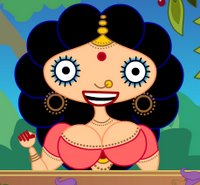 Artist Nina Paley
Artist Nina Paley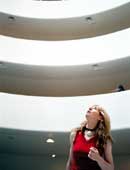 Thomas Riedelsheimer, 2005
Thomas Riedelsheimer, 2005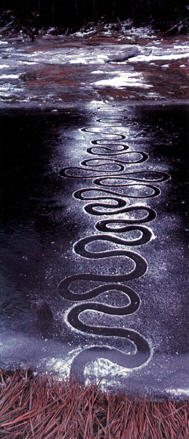 Thomas Riedelsheimer, 2001
Thomas Riedelsheimer, 2001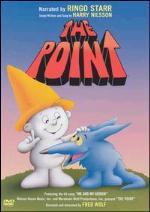 1971, Dir. Fred Wolf
1971, Dir. Fred Wolf
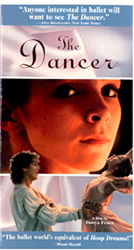 1994, Donya Feuer
1994, Donya Feuer
 2005, Dir. Luc Jacquet
2005, Dir. Luc Jacquet 1982, Dir. Jim Henson, Frank Oz
1982, Dir. Jim Henson, Frank Oz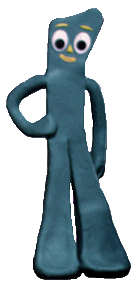
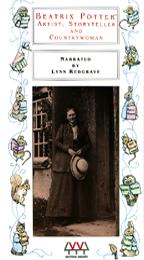
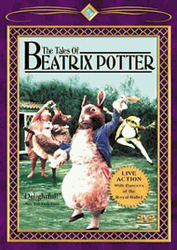 1971. Reginald Mills
1971. Reginald Mills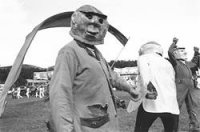
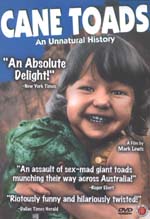 1988, Dir. Mark Lewis
1988, Dir. Mark Lewis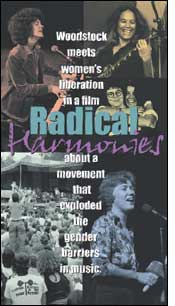 2002, Dir. Dee Mosbacher
2002, Dir. Dee Mosbacher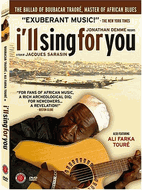
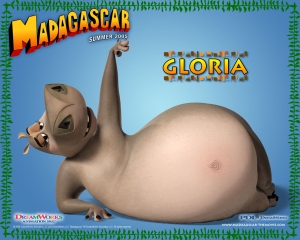
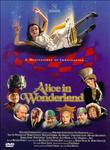 1999, Dir. Nick Willing
1999, Dir. Nick Willing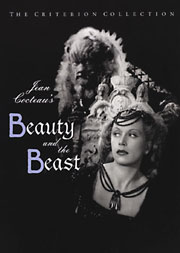 1946, Dir. Jean Cocteau
1946, Dir. Jean Cocteau 1975 / Dir. Ingmar Bergman
1975 / Dir. Ingmar Bergman 1990 / Dir. Francis Vose
1990 / Dir. Francis Vose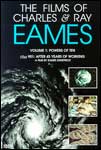 Five-Volume Set
Five-Volume Set